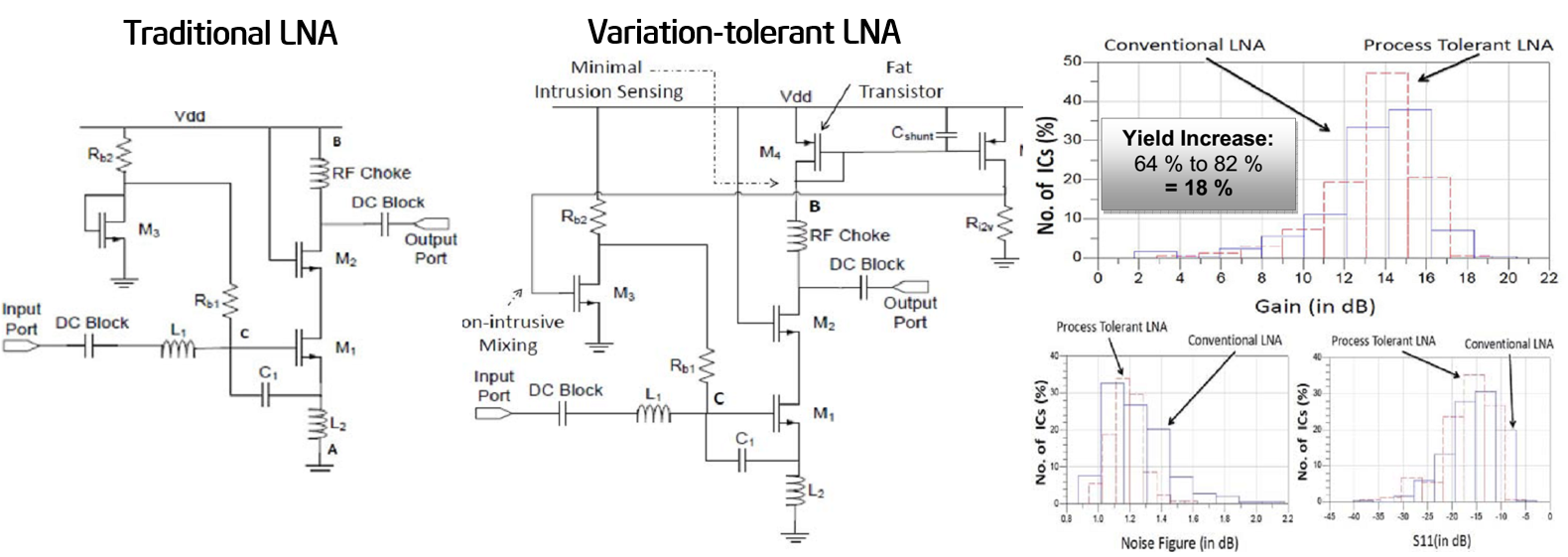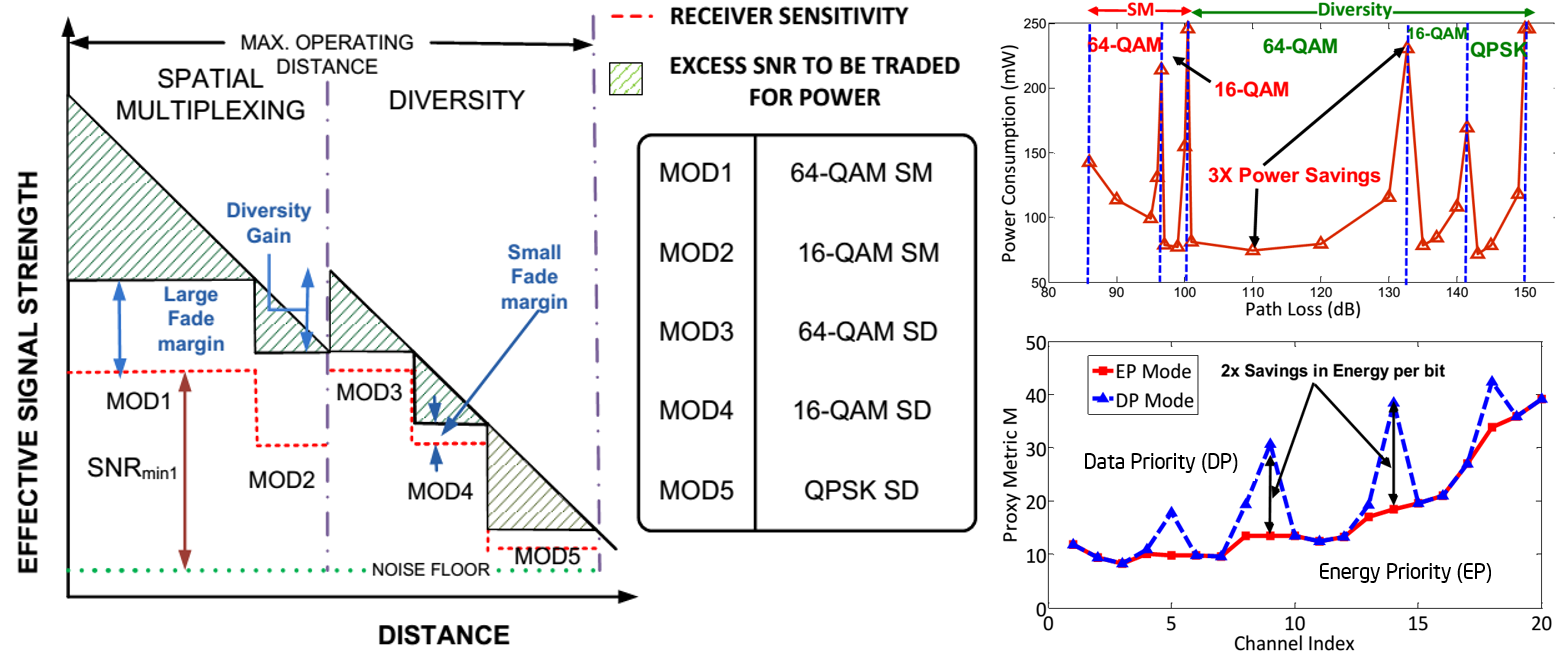Wideband Jammer Detector for Real-Time Blocker Tolerance
To simultaneously meet the stringent power budget and high performance requirements modern portable radio receivers employ adaptive circuit/system techniques. Adaptive receivers
opportunistically reduce its power consumption when operating environment is better than its worst case. The highest power requirement in wireless receiver design comes from the widely varying
signal and blocker/jammer scenarios that a receiver has to deal with. Handling high blocker requires high linearity whereas low signal strength calls for very low noise figure and high gain.
One way to save power in a receiver is to operate in a low linearity mode when there are no jammers present in the radio channel. To enable this, adaptive receivers‘ monitor the signal and
jammer strength by employing an extra built in low power circuit called jammer detector (JD) that can detect the presence of jammers in the operating environment. Traditional jammer detectors
used in commercial receivers are narrow band (NB JD), i.e. they can only look for jammers in the close vicinity of the signal. They are generally implemented by tapping the intermediate/low
frequency output of the downconversion mixer. Similar implementation of an NBJD uses 4 power detectors (2 in IF frequency and 2 in digital) to measure the power in different points along the
receiver chain to estimate jammer and signal powers. However, only NBJD does not provide the true jammer scenario as it cannot give an estimation of far-out jammers (caused by own transmitter
in concurrent operation 183 mode or from other transmitters) which also cause problems when the signal to be sensed is very low and the jammers are very high power. For example a DVB-H receiver
suffers from such far out jammers at GSM (900 MHz), WLAN (2.4GHz) and jammers at odd harmonics of the local oscillator frequency. The only circuits that are capable of measuring these jammers
are on-chip spectrum analyzer or multi-resolution spectrum sensing developed for cognitive radios, both of which are significantly high power, consuming almost same power as the receiver itself.
To address the issue of far-out jammer detection this work proposes the design of an ultra-low power miniature wideband (1GHz @ 2.2 mW, 2.4 GHz @ 3.6 mW) jammer detector (WBJD) as part of an
adaptive DVB-H receiver. This design includes a high gain low power RF amplifier to increase JD sensitivity, a low power peak detector and digital conditioning circuit that allows a programmable
attack time, all within 2.2 mW.
Key Publications : US Patent "Wideband Jammer Detector", S.Sen PhD Thesis, "Design of Process and Environment Adaptive Ultra Low Power Wireless Circuits and Systems"





